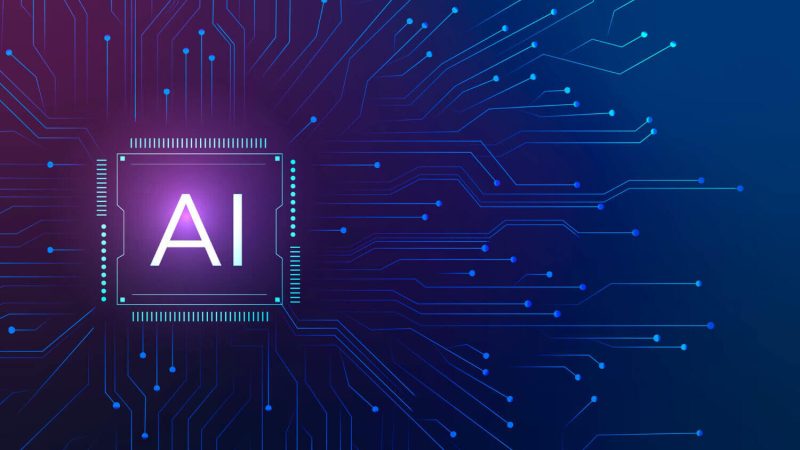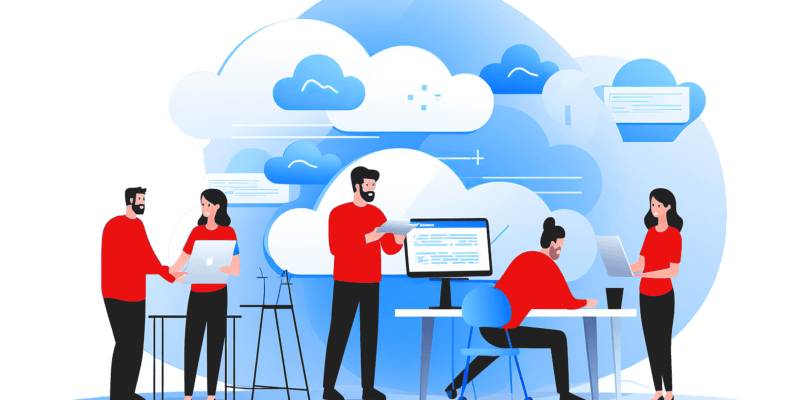Cloud Computing Trends In 2022

Introduction
According to research, the global expenditure of cloud computing is considered to reach over $482 billion by 2022, up from $313 billion in 2020. Cloud computing infrastructure is ultimately a backbone of the digital industry. By the time cloud computing has taken place, the software industry, companies, and businesses are starting to evolve. After the pandemic, as all the businesses shifted to an online platform, cloud computing played a very beneficial role in the software world. And Cloud Computing trends will be at boom in 2022.
Cloud Computing
Cloud computing is referred to as the demanding services over the internet, including storage, database, networking, software, resources, etc. And Cloud computing enables the user to store the data or information in a remote location. This data can be accessed from any location anytime via the internet. Instead of storing the files and data in the hard drive or local storage, it can be stored at cloud-based storage with extra security against loss of data. Cloud computing-based technologies are evolving with speed in the digital market due to their strong features, including cost-saving, productivity, accessibility, high speed, etc.
Cloud computing is of two types based on their services is Public and Private Cloud computing. Private cloud computing offers hosted services to only specific users, whereas Public cloud computing offers the services for free to anyone over the internet. One more option includes both the type public and private named Hybrid Cloud Computing.
Google cloud Platform is one the best examples of cloud computing. It is a public cloud computing provider provided by Google, and all the application development executes on the Google hardware, including Computing Engine, App Engine, Google cloud storage, etc.
Types of Cloud Computing:
The cloud computing system consists of three main services that are:
- Software as a Service (SaaS): It provides services to the user which offers the user to avoid complex software and other resources. The user doesn’t have to go through the complex procedure of installation and maintenance of the software to store or access the data.
It provides an entire software package solution that usually user pay for on a pay-as-you-go basis. These SaaS applications and software are also called web-based software, on-demand software, and hosted software.
Examples of Saas cloud computing which is provided by numerous companies are Cloud Analytics and Dropbox.
Advantages of the Saas cloud computing:
- Less expensive
- Time-saving
- Automatic Updates
- Excellent accessibility
- Scalability
Platform as a Service (PaaS):
This cloud computing service offers a platform that enables the user or the developers to develop the software and application, which is then delivered over the internet. The best benefit of this Platform is that all the development and deployment of the applications and software are done freely on any hardware device. The provider of PaaS can run or host the software and hardware resources on their substructure. The PaaS services are very easy to host in the cloud by the users via their web browser. Companies that offer cloud services are IBM, Salesforce, Amazon, and Smart cloud.
Learn more about Cloud Computing from this AWS Online Training to get ahead in your career.
Advantages of PaaS:
- Simple to use
- Reliable
- Cost-Efficient
- High Managing Power
- Security
Infrastructure as a Service (IaaS):
It is a platform for providing everything ranging from Operating System to Web Server, from storage to infrastructure through the IP-based connectivity on an out-sourced basis to reinforce various operations. It is also termed Hardware as a Service (PaaS). And It offers rudimentary security, operating system, services, networking, and much more to develop such applications. Examples of IaaS systems are IBM Cloud and Microsoft Azure.
Advantages of IaaS :
- Websites hosting
- Security
- Cost-effective
- Maintenance
- Efficiency
Advantages of Cloud Computing:
Cost-efficient:
According to research, about 20% of the companies are concerned about the initial cost of implementing cloud computing. The companies must consider the ROI along with other factors. Once the cloud server is implemented to the organizations, it will return much more than it takes for implementation. And there is a model offered by the Cloud Computing system that is Pay-as-you-go; this means you don’t need to pay for the extra features that you don’t use, and you don’t need to drop money on it unnecessarily.
Security:
RapidScale declared that about 94% of the businesses had caught sight of improvement in security after switching to cloud computing infrastructure and 91% of users state that it becomes much easier to meet government needs. Encryption is the prominent key to securing the data in the cloud and stopping the attackers from accessing the data. The cloud hosting job aims to monitor the security of the data and restrict the intruder to penetrate the cloud.
Mobility:
It is estimated that 2.6 Billion mobile phones and devices are being used globally. And through cloud computing technology, they can easily access the data from remote locations and stay up to date with their employees and coworkers. It balances the busy schedules of the corporate offices, freelance employees, and remote employees by providing services on the go. It is not surprising that most mobile phone users are taking benefits of cloud computing services even free of cost and maintaining their office and business schedule very well.
Also Read: Tips for Starting a Successful Cloud Computing Business
Disaster Recovery:
Since humans don’t have control over the disaster and there is no way to control or even predict the disasters, the only thing you do to your very sensitive data and to save your business is get the recovery, and that too in very less time. The services of cloud-based technologies offer the quick recovery of data storage in all emergency scenarios ranging from heavy natural disasters to power outages. According to a recent survey, about 43% of the IT executives planned to invest in cloud-based recovery solutions that will improve the recovery fundamentals, and users can get much-improved services.
Automatic Software Updates:
This is the best feature of Cloud-computing is that it automatically updates the software when required instead of pressurizing the employees of the organization. In this way, it saves them time and effort of the business workers and lets them do other work. The update and refreshing process do not take a lot of time, so the employer has to wait for it to be done and proceed with the next task.
Most Common Cloud Computing Trends to follow in 2022
The cloud computing trends analyze the new technology’s working manner and their expenditure. Now cloud computing has become the key to enhancing productivity, ROI, and smart working for businesses. With lots of advantages including scalability, on-demand access, high security, etc. cloud computing is approaching more IT companies and organizations. The report of Gartner depicted that the implementation rate of cloud computing has increased to 23% ($332 billion) in 2021 and is estimated to reach above $400 billion in 2022. Here are the top cloud computing trends one should follow to get a better experience and services of the cloud-based technologies.
Kubernetes Facilitating Blockchain:
Blockchain development services allow the organization to maintain accurate data of all the transactions without involving an administrator. All the public and private data of networks are registered through Blockchain Development technology. The Kubernetes Facilitating Blockchain is just like the open source coherence medium that automatically manages, scales, and deploys the stack infrastructure. It enables a high scaling and availability environment by having multiple containers running for complex services. The Kubernetes cluster solves two issues that blockchain faces are Complexity and interoperability between the infrastructure. It offers the services of integration between the organization which is structured uniquely and provides benefits of deployment and upgradeability.
Edge Computing:
Edge computing is a decentralized computing infrastructure that is used to store data involving building localized data centers that are close to the intended customer. It helps in avoiding the latency issue and increases the application performance. As much the data resources will be closer to the user, that will be more efficient to access and perform any operation in very less time. Edge computing increases the speed of the data processing, minimal to low latency, high and strong connectivity, high security, privacy of data, and less volume of the transmitted data.
Cloud Gaming:
This is the most emerging technology for the youth of game lovers as well as for the digital world. These cloud-based games enable the users to stream the virtually unlimited options of the game at a flat monthly or annual fee. Anyone can take the fun of high-quality gaming on any desktop, laptop, or even on smartphone without the requirement of a console. This amazing technology triggers the player’s engagement and demand. It enhances the demand of multi-players and ignores the existing platform hurdles. It also enables the users to get rid of the requirement of storage or any specific hardware.
Some of the widely used gaming spaces at this time are Microsoft, Google, Apple, Amazon, Samsung, Sony, and Nvidia.
Hybrid Cloud and Multi-Cloud Infrastructure:
With the help of these hybrid services, the users can store the data on the public server if they need quick and frequent access and if there are sensitive data, they can keep it at the private server and the well-integrated combination will form the best hybrid technology. This uses multiple servers for different purposes to store the data. This multi-cloud model enables the organizations to select and work on different environments, business needs, and availability. The cloud-native environment does not depend on any architecture or any specific cloud service provider.
Serverless cloud:
The serverless cloud is a very amazing, unique, and new concept based on function-as-a-service. It means the organization does not need to rent servers or pay the amount for storage or bandwidth. It works on the model of pay-as-you-go services. However, as the name suggests serverless means it doesn’t have any server. The server is there but with abstraction property. This means that the user doesn’t need to be involved in all the complex processes of the technicalities and the configurations.
Conclusion:
Cloud computing has become one of the largest technologies in the last two years and triggers innovation and flexibility in the digitalization journey of the world. With the amazing growth and importance of cloud services, it will go further with the software industry to remark on history. And most of the technology is building cloud-based to earn more attraction and importance. The above-mentioned top cloud computing trends are going to be very beneficial for you to catch speed in the digital landscape with numerous dynamic architectures and amazingly developed cloud services. Implementing cloud-based technologies will enhance the software business as well as contribute to the digital world.
Author Bio
Meravath Raju is a Digital Marketer, and a passionate writer, who is working with MindMajix, a top global online training provider. He also holds in-depth knowledge of IT and demanding technologies such as Business Intelligence, Salesforce, Cybersecurity, Software Testing, QA, Data analytics, Project Management and ERP tools, etc.






